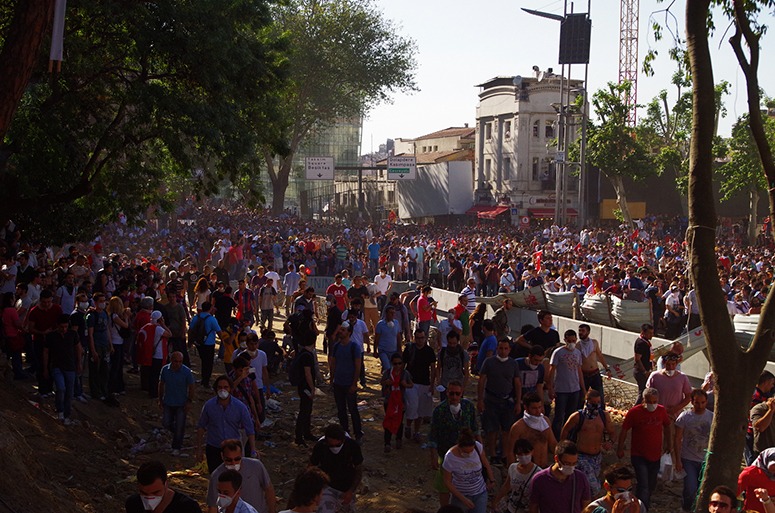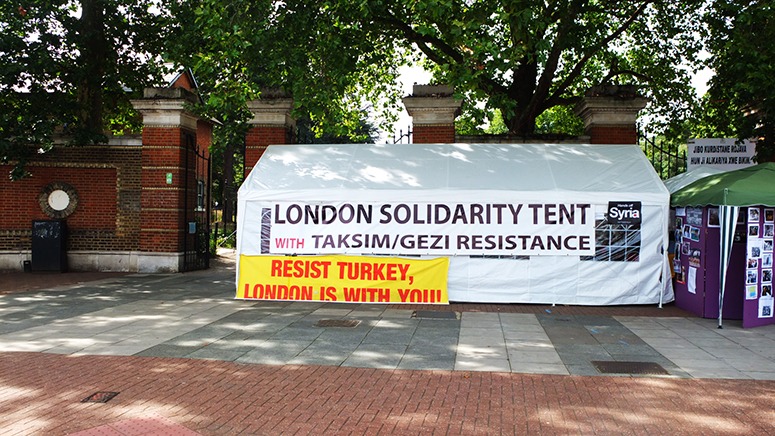The Turkish government wants to build a shopping mall on Taksim Gezi ‘park’ or ‘square’. The local people are against it. One way or another, I believe the outcome of the Taksim Gezi events will be good for Turkish landscape architecture. To the barricades. If the shopping mall is built, it will become a cause célèbre. As Tertullian remarked ‘the blood of the martyrs is the seed of the Church’. And if the shopping mall is not built it will be a famous victory – in which landscape architects should aim to share.
Queen Anne asked one of her Ministers what it would cost to stop public access to London’s Hyde park and was told, “It would cost you but three crowns, ma’am: those of England, Scotland and Ireland.” . Public open space should be at the centre of public debate.
The Bosphorus is the traditional boundary between Europe and Asia and also the meeting point of the two cultures which govern modern Turkey: western and eastern. Many Ottoman intellectuals and leaders came from western (European) Turkey. Though born in Istanbul, Recep Tayyip Erdoğan’s political culture has Anatolian roots. Ataturk, who founded the Turkish republic, was born in Greece and sought to westernise Turkey. So the question, as ever, is: will Turkey look east or will Turkey look west? We can extrapolate the choice to landscape architecture. Looking east, to the Turks’ nomadic past, suggests a lack of significance for permanent open space. Looking west, to the settled lands of Europe, suggests a desire to protect open space.
Though rendered in English as Taksim ‘Square’, the Turkish name is Taksim Meydanı. ‘Meydani’ derives from the Persian word maidan which was used for a multi-purpose civic space. It was not a park (paradaeza in Persian) and it was not usually planted. The uses included markets, parades, festivals, games and camping. This made it a very important place – though the famous maidan in Isfahan has since been laid out as a western park and is not busy. So should Turkish landscape architects look west or east? Both. Topkapi Palace is a good symbol for this: the pattern of its open spaces is that of an encampment, but the encampment has become permanent (as Gülru Necipoğlu, explains in Architecture, ceremonial, and power: The Topkapı Palace in the fifteenth and sixteenth centuries. Cambridge, Mass, 1991).
Well, Istanbul lost its chance to host the 2020 Olympics yesterday for, it is thought, two reasons (1) the brutal treatment of protesters over the proposed development of Taksim Gezi (2) Turkey’s poor record in controlling the use of drugs by its athletes. I give my sympathy to the landscape architects and others involved in Istanbul’s bid and have no hesitation in saying that the landscape architecture of Istanbul is of the very highest quality.
I am pleased to report that London’s park users (photo of the gates of Finsbury Park below) support Istanbul’s park users in calling for the conservation of Taksim Gezi Meydani. We might be able to send protesters if another occupation becomes necessary but we are not considering armed intervention of any kind.
Top image of Taksim Gezi courtesy Alan Hilditch. Lower image Gardenvisit.com
The landscape architecture of Taksim Gezi Meydani 'Park' or 'Square'
20 Replies


